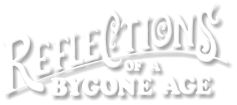


 Do you send Easter cards? I never have until this year when I sent two Edwardian postcards with current first class stamps on to family. And that compares with maybe a couple of hundred Christmas cards. Plenty of Easter greetings folded cards are on sale in the shops, as the religious festival has been added to all the others commemorated by greetings cards manufacturers. Do people who buy them do so because it’s a religious festival or just another chance to contact a friend? Or is it basically just a retail opportunity?
Do you send Easter cards? I never have until this year when I sent two Edwardian postcards with current first class stamps on to family. And that compares with maybe a couple of hundred Christmas cards. Plenty of Easter greetings folded cards are on sale in the shops, as the religious festival has been added to all the others commemorated by greetings cards manufacturers. Do people who buy them do so because it’s a religious festival or just another chance to contact a friend? Or is it basically just a retail opportunity?
At the start of the 20th century, though, Easter postcards were big business, with virtually all the top national postcard publishing firms very active in the genre, the occasion rivalling Christmas and New Year as a retail opportunity. Raphael Tuck produced an extensive ‘Easter’ series, as well as overprinting existing cards with greetings related to the religious festival. Many of their cards used the symbol of The Cross placed alongside Easter motifs such as flowers, chicks and eggs, lambs and rabbits. Eggs and rabbits especially were signs of good luck and new life in pagan times, and were adopted by early Christians because of the association with Jesus being raised from the dead and having new life. Lambs appeared on Easter postcards because of their biblical association with Jesus, the ‘Lamb of God’, and because they are born in Springtime. Additionally, lambs were and still are used in the Jewish faith as a sacrifice for people’s sins and wrongdoings.
Other major publishers with a prolific output of these cards were Beagles (including many overtly religious ones), Salmon, Wildt & Kray (rivalling Tuck for top Easter postcard producer), Misch & Co., Hildeheimer, Max Ettlinger and Stewart & Woolf, while the International Art Publishing Co. (New York and Berlin) produced many fine embossed examples.
Part of the appeal of collecting Easter cards is that postcards from different countries highlight varying customs and traditions: in Scandinavia, for example, they often include cycles or motorcycles being ridden by chicks and rabbits! Some of the best come from Russia, published by the St. Petersburg section of the Red Cross. Easter postcards generally feature some very attractive designs, and are available at modest prices, from less than £1 to around £5 for the better examples – and that’s good value!
